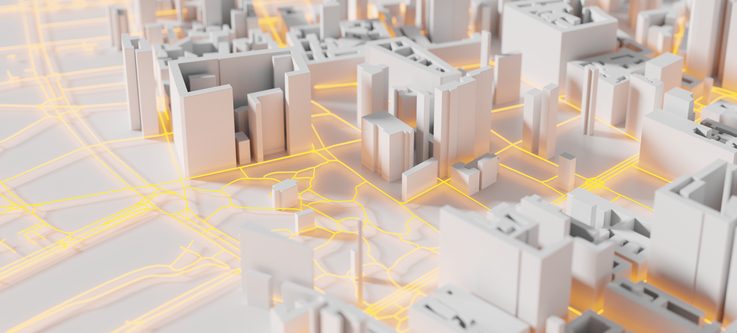
There are many terms to describe the integration of technology to support city systems and service delivery. The term smart city has been widely adopted, although many struggle with its tech-centric focus. Many claim that the framing of smart cities is overly focused on “what” and “how” at the expense of the “why” and the “who.” From this desire to prioritize the diverse needs of citizens and residents emerges the idea of the Future Ready City.
A Future Ready City develops and implements plans “to become more sustainable, resilient, inclusive, digitally enabled, and human centric” across key urban domains. These domains include: (1) Environment and sustainability; (2) Urban Infrastructure; (3) Mobility and Transportation; (4) Safety, security, and resilience; (5) Citizen living, health, and trust. Within each of these intersecting areas, Future Ready Cities are simply better equipped to address both the known urban complexities, such as public health, crime, infrastructure, and economic and business conditions, while also being able to adapt and respond to unknown disruptions, including natural and human-made disasters.
So how are cities doing in the quest to become Future Ready? ThoughtLab has been conducting rigorous research and evidence-based analysis with hundreds of cities worldwide to benchmark performance amongst key indicators. In Fall 2024, ThoughtLab, together with Axis Communications, Deloitte, FTI Consulting, Intel, Itron, and ServiceNow, will release their latest findings on the optimal strategies, approaches, actions, and investments across 250 cities in 78 countries representing more than 734 million residents (approximately nine percent of the global population). City sizes span from 50,000 residents to 37 million and showcase a broad economic range.
Despite the cities’ diversity, there are clear cross-cutting themes that synthesize city leaders’ responses and present clear areas for progress (e.g., funding gaps) as well as areas for improvement (e.g., transportation). Many Future Ready Cities also show steady improvement towards environment and sustainability goals to address climate change, but much work remains to be done. Those cities that are making the greatest progress in addressing the impacts of climate change through decarbonization are investing in technology. The top digital solutions include: Real-time air and water quality monitoring systems, Applications to track energy and water use, and Predictive analytics for flood warning. These tools support city-wide plans to reduce greenhouse gas emissions, facilitate a green energy transition, and support the management of land use, open space, and waste.
The study’s findings provide actionable insight to support city leaders as they plan, prepare, and respond to the inevitable evolution of j inn b cities. As the world becomes increasingly urbanized, it is important to have clear, systematic methods to measure what works. Stay tuned for the release of the 2024 Future Ready Cities Study: From future vision to urban reality.